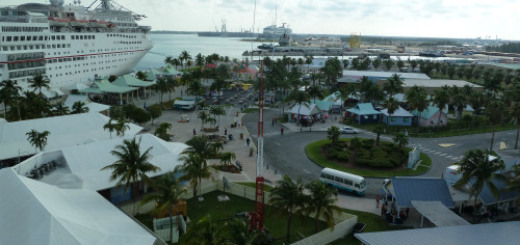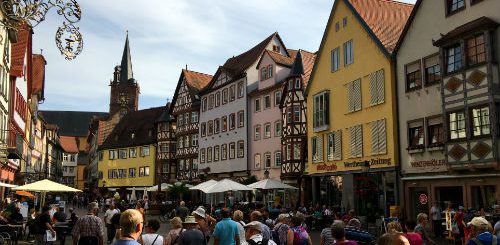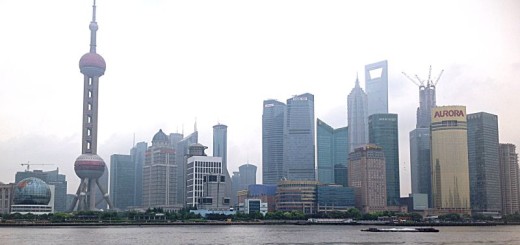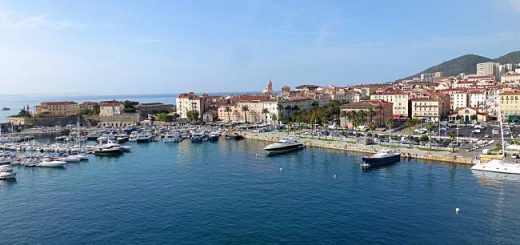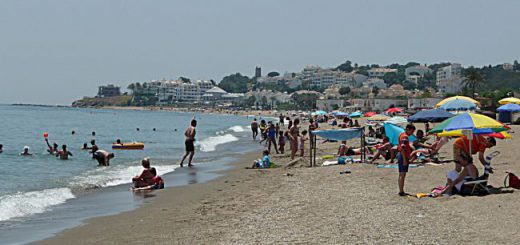Dachau – a Memorial

The concentration camp set up by the National Socialists in Dachau in March 1933 to house mainly political prisoners became the prototype for all subsequent concentration camps set up under the reign of Adolf Hitler, as well as a training centre for SS (Schutzstaffel) concentration camp guards. During its 12 years of existence, over 200,000 people were imprisoned there and in its sub-camps. About one fifth of all prisoners did not survive. When the American forces liberated the camp in April 1945, they found rail cars full of corpses from other camps and thousands of emaciated prisoners. The SS had attempted to move prisoners away from the approaching liberators, making about 7,000 prisoners undertake a “death march” to a town further south. Many died along the way from starvation or exhaustion, or were shot by guards once they were unable to continue. On the initiative of survivors and in memory of those who died, the Dachau Concentration Camp Memorial Site was founded in 1964. The Memorial Site is not only a place of remembrance, but a cemetery, a museum and a place of learning. The site also holds special exhibitions, runs an extensive educational program and features an archive and library.
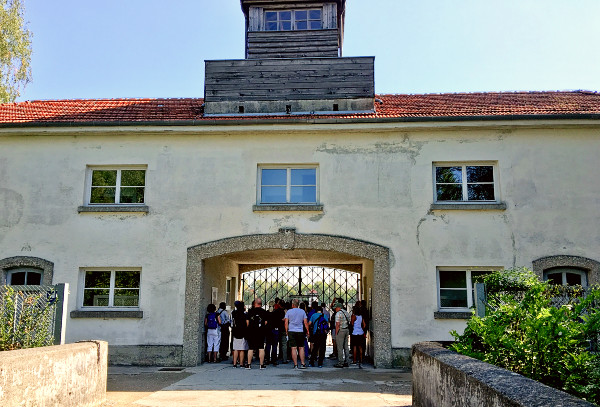
Dachau lies about 25km northwest of Munich in southern Germany. Since we were in the area following our coach tour, we felt it almost a moral obligation to go there and witness first hand the environment that had harboured this cruel episode in history, and to pay our respects to those persecuted for simply having a different ethnicity, faith, lifestyle or political view. It is free to enter and thousands of people visit Dachau each year to learn about what happened there and remember those who were imprisoned and died during the Holocaust. We entered through the Jourhaus, via the same camp gate as prisoners once did, noting the sign on the wrought iron gate: Arbeit Macht Frei (Work Makes You Free). This was part of the Nazi propaganda that these camps were for work and education. Unfortunately for many, the freedom gained was that in death.
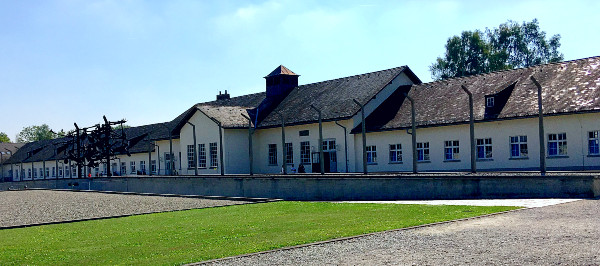
On the other side of the gate we faced a wide gravel courtyard where once the prisoners assembled for roll call twice a day and witnessed punishments. These were usually drawn out affairs in all sorts of weather conditions, where frail prisoners often collapsed and died. Punishments would be in the form of prolonged military drills, or floggings. On one side was the the maintenance building and on the other, the barracks complex. We wandered through the maintenance building, to read accounts of the history of the Dachau concentration camp and the fate of the prisoners. Here we learned that new prisoners went through an humiliating induction procedure – they had to hand over their clothes and personal items, walk naked to a registration table, then to the showers where they had all their body hair shaven, were disinfected and showered and eventually received their ill-fitting prisoner uniforms. The camp had been set up on the grounds of an abandoned munitions factory and the early prisoners had to first demolish the factory, using salvaged materials to construct the new camp buildings. The more solid buildings that still remain were constructed for the various functions of the SS guards and, behind the maintenance building, a prison/interrogation/torture ‘bunker’ for mainly political or high profile prisoners. It was also in the functional buildings where prisoners were deployed as metalworkers, electricians, painters, and installers, or had to work in the laundry or the prisoner kitchen.

The International Monument, installed in 1968 in front of the former maintenance building, is based on the idea of a path. As we walked towards it we encountered an entry wall inscription that encourages visitors to follow the example of the prisoners and actively defend a society without terror and tyranny. The central bronze sculpture of the International Monument shows human figures entangled in barbed wire, representing the despair and suffering of the prisoners. At the end of the ascending path we arrived at a tomb containing the ashes of an unknown prisoner. Inscribed into the wall behind the tomb in five languages is the exhortation “Never Again”.
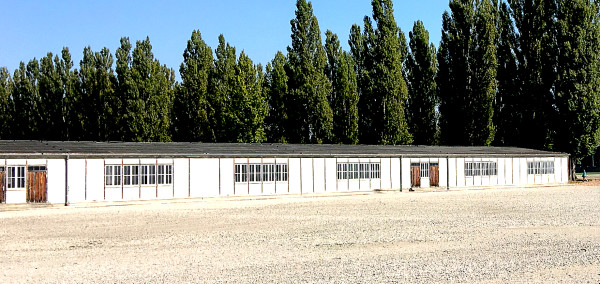
The huge camp area consisted of 34 barracks, including several reserved for brutal medical experiments, but called ‘sick bay’ for propaganda purposes. All these buildings were torn down in the 60s, but replicas were erected in 1965. Walking towards the barracks area we could see rows of concrete slabs laid out symmetrically either side of the treed camp road. It was both enlightening and depressing to see in a reconstructed barrack an exhibition on the accommodation and living conditions of the prisoners, showing bunk rooms, a day room with lockers, an ablution area and communal toilets.
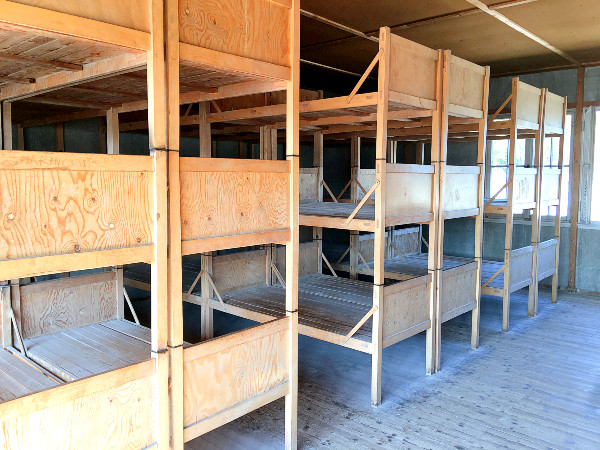
Conditions at the camp were brutal and overcrowded. Each of the barracks or blocks had been designed to hold 200 persons, but towards the end of the war, the barracks were full to overflowing, with up to 2,000 prisoners crammed into a barrack. The entire facility had been designed to house some 6,000 detainees, but the population continued to rise and by 1944 approximately 30,000 prisoners were packed into the camp. Sub-camps were created to house able-bodied prisoners who were used as slave labor to manufacture weapons and other materials for Germany’s efforts in World War II. Prisoners who were judged too sick or weak to continue working were sent to the Hartheim ‘euthanasia’ killing centre near Linz, Austria, or in line with Hitler’s ‘Final Solution’, Jews were moved to Nazi extermination camps in Poland, where they died in gas chambers.
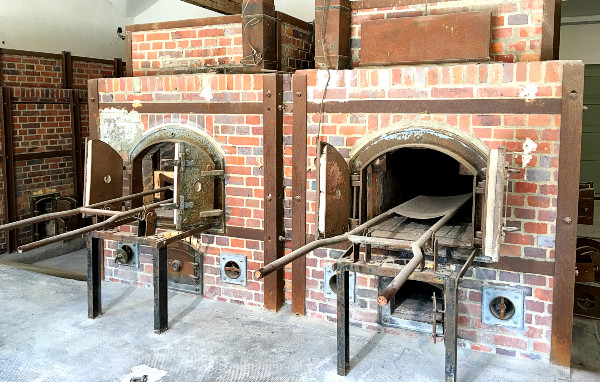
The crematorium area (Barrack X) is the main place of remembrance in the Memorial Site. With rising prisoner numbers and mortality rates it was necessary to build a crematorium with four furnaces, a disinfection chamber for clothing, day rooms and sanitary facilities, as well as morgues and a gas chamber disguised as a “shower bath”. However, killing people on a mass scale through poison gas never took place in the Dachau concentration camp. Nevertheless, standing in those empty room where bodies had been piled up awaiting their turn in the cremators was an eerie experience. As a retired Funeral Director I am sadly accustomed to death and bodies, but being in this area really made me weep.
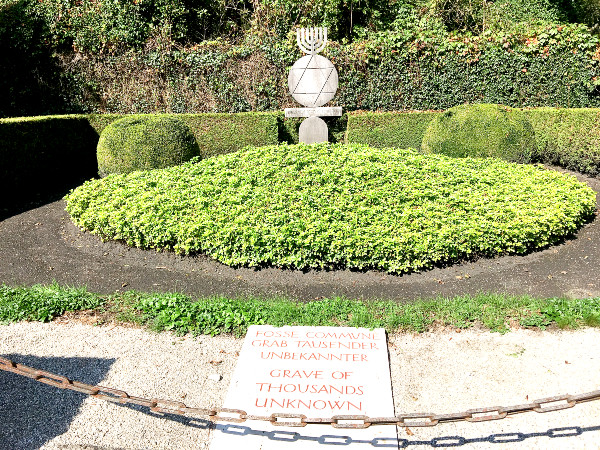
Separated from the main camp, the area near the crematorium was used as an execution site. Here prisoners were hanged or shot in the back of the neck. We followed a commemorative “path of death” which took us past the execution sites and the graves with the ashes.
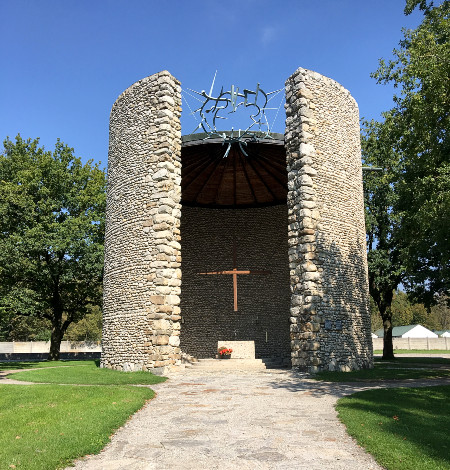
Different religious memorials and chapels are also located at the northern end of the grounds, representing the Jewish, Catholic, Protestant and Russian Orthodox faiths of those imprisoned. The Catholic Mortal Agony of Christ Chapel was the first religious memorial erected in that area. Several thousand Catholic clergy members were incarcerated at Dachau. Two in particular were murdered for their anti-Nazi stance and were later beatified by Pope John Paul II.
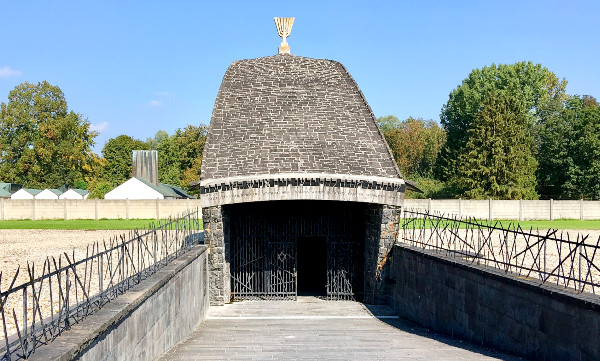
The Jewish Memorial was unveiled in May 1967. The structure features a ramp that leads downward, reminding visitors of the extermination of European Jews. At its lowest point, light shines into the memorial through an opening.
Wandering through the Memorial Site was an emotional and depressing experience for us. We left feeling rather drained and exhausted. I had taught about the Holocaust during my earlier career as a History teacher, so I expected there would be little to shock me, therefore it came as a surprise that it affected me so. But I’m glad we did it. We were pleasantly surprised to see many German school groups touring the complex during our few hours there. It is a good sign that the words “Never Again” will be fulfilled.



